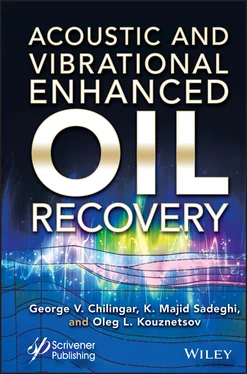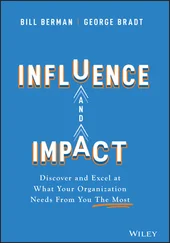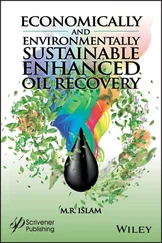1 ...6 7 8 10 11 12 ...20 38. Wittle, J.K., Hill, D.G., Chilingar, G.V., Direct current stimulation for heavy oil production. Paper 2008-374, in: Second World Heavy Oil Congress , Edmonton, March 10-12, 2008.
39. Wittle, J.K., Hill, D.G., Chilingarian, G.V., Direct electric current oil recovery (EEOR) - A new approach to enhancing oil production. Energ. Source Part A , 33, 805–822, 2011.
40. Zaks, S.L., Effect of rock and bound water on value of pressures at which oil/ gas system is transformed into one-phase gas condition. Dokl. Akad. Nauk USSR , 86, 1017–1020, 1952.
41. Zaks, S.L., Toward question of migration and accumulation of petroleum. Dokl. Akad. Nauk USSR , 105, 332–334, 1955.
42. Zhuze, T.P. and Yushkevich, G.N., Solubility of oil and its heavy fractions in compressed gases. Trudy Inst. Nefti Akad. Nauk , 13, 626–274, 1959.
43. V.P. Dyblenko, O.L. Kuznetsov, Ya.V. Eremenko, R.Ya. Sharifullin et al. , International application PCT/RU No. 2010120080. Method of productive reservoir treatment and downhole equipment for its implementation. Publ. in B.I. 2011. No. 33.139. Patent No. 2258803 RF, 2005.
44. V.P. Dyblenko, R.Ya. Sharifullin, A.P. Lysenkov et al. , Patent No. 2261990 RF, 2005.
45. V.P. Dyblenko, I.A. Tufanov, A.V. Ovsyukov et al. , Patent No. 2228437 RF, 2004.
46. V.P. Dyblenko, A.P. Lysenkov, Yu.S. Ashchepkov et al. , Patent No. 2366806 RF, 2009.
47. E.Yu. Marchukov, V.G. Tarasenko, V.I. Zhdanov, V.G. Bazarov, V.P. Dyblenko et al. , Patent No. 2087756 RF, 1997.
48. V.P. Dyblenko, E.Yu. Marchukov, V.I. Zhdanov, I.A. Tufanov, Patent No. 2144440 RF, 2000.
49. V.P. Dyblenko, A.P. Lysenkov, Yu.S. Ashchepkov et al. , Patent No. 2366806 RF, 2009.
50. V.P. Dyblenko and I.A. Tufanov, . Patent No. 2258803 RF, 2005.
51. V.P. Dyblenko, I.A. Tufanov, A.V. Ovsyukov et al. , Patent No. 2228437 RF, 2004.
52. V.P. Dyblenko and I.A. Tufanov, Patent No. 2258803 RF, 2005.
53. V.P. Dyblenko and V.S. Evchenko, Patent No. 2349741 RF, 2009.
54. V.P. Dyblenko, O.L. Kuznetsov, R.S. Khisamov et al. , Patent No. 2247828 RF, 2005.
55. V.P. Dyblenko, O.L. Kuznetsov, R.S. Khisamov et al. , Patent No. 2268996 RF, 2006.
56. V.P. Dyblenko, R.Ya. Sharifullin, I.A. Tufanov et al. , Patent No. 2291954 RF, 2007.
57. Donaldson, E.C., Chilingar, G.V., Yen, T.F., Enhanced Oil Recovery, I: Fundamental and Analyses , Developments in Petroleum Science 17A. Elsevier, New York, 357 pp, 1985.
58. Donaldson, E.C., Chilingar, G.V., Yen, T.F., Enhanced Oil Recovery, II: Processes and Operations , Developments in Petroleum Science 17B. Elsevier, New York, 604 pp, 1989.
59. Chilingar, G.V., Katz, S., Fedin, L., Fedin, A., Khilyuk, L., Liu, M., Primary Versus Secondary Migration of Oil. J. Sustain. Energy Eng. , 2, 4, 323, April 2015.
60. Sadeghi, K.M., Sadeghi, M.-A., Chilingarian, G.V., Yen, T.F., Developing a New Method For Bitumen Recovery from Bituminous Sands Using Ultrasound and Sodium Silicate. Geologiya Nefti i Gaza/(Geology Oil Gas) , 8, 5357, 1988.
61. Sadeghi, K.M., Sadeghi, M.-A., Yen, T.F., A Novel Extraction of Tar Sands by Sonication with the Aid of In-Situ Surfactants. Energy & Fuel , 4, 604608, 1990.
62. Sadeghi, K.M., Lin, J.R., Yen, T.F., Sonochemical Treatment of Fuel Components. Energy Sources , 16, 3, 439–449, 1994.
63. Sadeghi, M.-A., Sadeghi, K.M., Kuo, J.-F., Jang, L.-K., Yen, T.F., Sonication Method and Reagent for Treatment of Carbonaceous Materials. U.S. Patent 4,891,131, January 2, 1990 (38 Claims).
64. Chilingar, G.V. and Haroun, M., Electrokinetics for Petroleum and Environmental Engineers , p. 240, Scrivener Publishing (Wiley, New Jersey, 2014.
65. Wilkinson, D. and Willemsen, J.F., Invasion percolation: A new form of percolation theory. J. Phys. A.: Math. Gen. , 16, 3365, 1983.
66. Roberston, J.O. and Chilingar, G.V., Environmental Aspect of Oil and Gas Production , p. 394, Scrivner Publication – Wiley, 2017.
67. Bablyan, G.A., Questions of Mechanism of Oil Recovery , p. 254, Aznefteizdat, Baku, 1956.
68. Kuznetsov, O.L., Dyblenko, V.P., Chilingar, G.V., Sadeghi, K.M., Marchukov, E.Y., Sharifullin, R. Y., Chirkin, I.A., Simkin, E.M., Oscillations and Waves in Fluid-Saturated Geological Environments: Phenomena, Processes, Patterns. Wave Paradigm . Izhevsk: Institute of Computer Sciences, Moscow (In Russian), 420 pp, 2021.
2
Wave Spreading Patterns in the Porous Media
2.1 Spread of Vibration in Reservoir
Wave spreading in the media with fading is best studied for the conditions of low amplitude flat waves within a boundless and uniform porous medium saturated with a viscous fluid. Usually, two directions are identified in these studies.
The first direction involves construction of idealized models of porous medium. In such models, the solid phase is viewed as a system of variously packed grains with fluid-filled voids. It is assumed that the effect of a relative motion of the fluid and rock matrix on the wave spreading is negligible. This assumption is substantiated for low frequencies although exact frequency criteria of its applicability are absent. It is believed that this approach is applicable in seismology and seismic exploration as it allows for an approximate computation of major parameters of the elastic vibration field for idealized porous medium models with a certain grain packing at the assigned thermodynamic conditions.
Another study direction is based on mechanics of a continuous medium and on thermodynamics of irreversible processes. This direction was first described by Frenkel [24] and subsequently expanded by Bio and Rahmatullin [18], Nikolayevsky [15], Nigmatullin [14], and others. This direction presents substantially broader opportunities. In describing a porous medium by a set of thermodynamic variables (“observed” mechanical and concealed parameters), it is possible to determine various dissipative functions, to evaluate the system behavior in time and the relaxation effects. The elastic constants in the equations of wave spreading, according to the conformity principle, may be replaced by operators, and this way, various processes of absorption and dispersion may be accounted for. For instance, it may be processes associated with surface effects, dissipative phenomena directly in the solid phase or liquid, etc. Within a framework of this approach, temperature effects may also be considered, effects of porous medium compressibility changes at changing of frequency and other relaxation processes resulting in fading of the elastic waves.
This theory gives the fading coefficient values underestimated by two or three orders of magnitude at low frequencies compared with the values measured in real media. However, this discrepancy may be imaginary. It may be explained by that the preconditions of the theory relatively boundless and uniform nature of the media do not match the observation conditions at low frequencies when, due to the need of using large measurement bases, absorbing properties of a rock massif with a characteristic dimension no smaller the wave length is evaluated. Thus, the studied medium may not be viewed as uniform relative to its physical properties, and the standard mechanism of viscous friction becomes insufficient (at least in the low frequency area) for the description of elastic waves’ fading patterns in saturated porous media.
To confirm this, an attempt was undertaken, remaining within the framework of this theory, to evaluate the effect of accidental nonuniformities in the medium by introducing a transformation energy exchange mechanism between different wave types [12]. The predicted absorption coefficients and their correlation with frequency well agreed with the experimental data. A more general approach was based on a well-developed procedure of averaging differential equations with rapidly oscillating coefficients [7]. The obtained results enabled a substantial expansion of applicability boundaries of the fading transformational mechanism for a sufficiently broad spectrum of nonuniformity values existing in the real media. This allowed explaining most substantial discrepancy between the theoretical conclusions and experimental data, which indicate the permanent measured experimental fading decrement within a wide frequency range. Also explained was experimentally observed low increase in wave spread velocity with increasing frequency. Frenkel-Bio-Nikolayevsky equations described a linear approximation of wave spreading. With an increase of the source vibration amplitude, the appearance in the medium of nonlinear effects resulting in the formation of stable wave fronts, increase of vibration amplitude far from the source and other phenomena is possible.
Читать дальше












